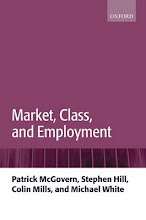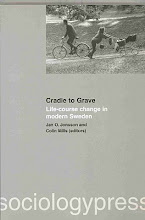The high politics of the fall-out from Brexit are so fascinating that it is difficult to take one's eyes off the rapidly evolving tragedy/farce. Even so, just to get things clear in my own mind, I took a little time out to look at some data. My idea is nothing more profound than to illustrate what my old LSE tutor Eileen Barker used to call "what goes with what". I suppose the definitive source for this sort of thing will be the ESRC referendum study that is being directed by my colleague Geoff Evans. We also already know quite a bit from the polls and from the aggregate level picture. What I'm going to ask here is what can we have learn from the 2015 British Election Survey cross-section? The BES data were collected between May and September 2015, so long before campaigning began in earnest, but my guess is that for our purposes this doesn't matter too much.
One caveat before I go further: this is a blog post not an academic article so I'm going to cut to the chase rather quickly without going into all the details about how I've processed the data.
The first thing I want to look at is support for the EU and how it
relates to other issues and dispositions that are likely to be of
relevance to how people voted on June 23rd. I look simultaneously at four things: 1) support for the EU; 2) immigration; 3) feeling alienated from politics in the sense that you don't believe politics reflects your concerns; 4) believing that welfare benefits are a bad thing or are abused. I take 3 items on each of these things from the BES and estimate four latent class models. In each case the model fits very well and divides the population into three groups: 1) those who are positive about the EU/immigration/feel politics reflects their concerns/think welfare is a good thing; 2) those who are ambivalent or don't know what they think about these issues; 3) those who are negative about the EU/ concerned about immigration/feel alienated from politics/dislike welfare.
If you put all four of these latent classifications into a multiple correspondence analyses (MCA) you get a pretty clear picture of what goes with what (click to enlarge).
People who don't like the EU (-) also don't like immigration (-), feel politically alienated (yes) and think that something has gone wrong with welfare (-). Conversely if you like the EU (+) you don't mind immigration (+) , don't feel politically ignored (no) and feel positive about welfare (+). Nothing particularly surprising here, apart from perhaps quite how closely the four domains map onto each other.
Next step. How do these attitudes relate to party politics? We can add to the MCA plot information about how people voted in the 2015 election.
Again, no particular surprises. UKippers are very decided in their views, Labour, Nationalist and other voters are strongly for the EU and the other things that go with it. LibDems are also pro EU but are also pulled towards ambivalence. The Conservatives and those that didn't vote tend towards an anti EU position but also feel the gravitational pull of ambivalence.
OK, what about the social structural stuff then? Let's start with social class. Yup, that seems to work.
The routine and semi-routine employees (labelled here "working class") and the self-employed dislike the EU, immigration etc. What about if we do class in a different way by looking at household income?
That's pretty clear too. The rich like the EU, the poor don't. And age?
Pretty clear relationship there as well. I could on. I've got similar plots for graduates versus non graduates, students versus non students and of course for geographical regions.
If you do something fancy like estimating a multinomial logit with the latent pro, ambivalent and anti EU groups as the response variable, all these relationships stand up as partial "effects" when you include all the others as predictors. It's probably worth emphasizing though that it is difficult to know what sense to give to the coefficients from that sort of exercise. What you really want to know is the discriminating power of the predictors. An ROC plot would probably be revealing.
Punch line. Social structure is important, but then we knew that anyway didn't we?















No comments:
Post a Comment